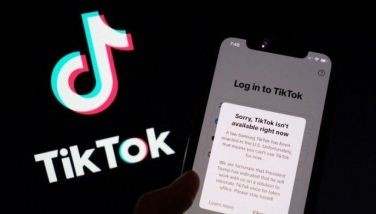The New ‘Digital Divide’
April 12, 2002 | 12:00am
 The World Telecommunication Development Report "Reinventing Telecoms" and the Trends in Telecommunication Reform 2002 Report "Effective Regulation" show that while the gap in telephone access between the developed and developing world is narrowing, the "digital divide" in the quality of Internet access is increasing.
The World Telecommunication Development Report "Reinventing Telecoms" and the Trends in Telecommunication Reform 2002 Report "Effective Regulation" show that while the gap in telephone access between the developed and developing world is narrowing, the "digital divide" in the quality of Internet access is increasing.
In 1991, total telephone penetration (fixed-line and mobile telephones) stood at 49 telephones per 100 inhabitants in developed nations, 3.3 in emerging nations and just 0.3 in the least developed nations. Today the levels are 121.1 telephones per 100 inhabitants in developed nations, 18.7 in emerging nations and 1.1 in the least developed nations.
Ten years ago, those countries that had mobile cellular networks or were connected to the Internet were in the minority. Now, most nations have both. Africa has more than 20 million mobile phone users by the end of 2001, and 28 African nations – over half the countries of the region – had more mobile phones than fixed-line subscribers, a higher percentage than any other continent.
Most encouraging is the fact that the nations with the fastest recent growth rates have been the least developed countries. They have surpassed the psychological threshold of one telephone user per 100 inhabitants in 2001. This is an unmistakable sign that the digital divide is being reduced, albeit at too slow a pace.
While there is evidence that the digital divide in access between developed and developing nations is shrinking, the nature of the divide is shifting from basic to advanced communications, and from quantity to quality. Unfortunately, this is more difficult to measure because, unlike access, quality implies the nature of the users’ online experience.
For example, international Internet bandwidth (or IP connectivity) is a good measure of a user’s experience with the Internet. The greater the bandwidth, the quicker the response times and the more likely it was a richer multimedia or interactive experience. Yet the 400,000 citizens of Luxembourg share more international Internet bandwidth than Africa’s 760 million citizens. The reality is that high-speed Internet access, which has become the norm in countries such as the Republic of Korea and Singapore, is still a long way off in most developing countries.
The digital divide not only exists between countries but within a country between urban and rural areas, between men and women, between the educated and the unschooled and between the young and the elderly. This divide is mainly the result of socioeconomic disparities, the root cause of which is poverty. The less money a country’s citizens have, the less likely they are to use information and communication technologies (ICTs).
If access to information is a measure of power in society, the digital divide reflects how power is distributed. There is a shortage of conclusive research and examples of how ICTs can transform the development process. Effective solutions will require a triumvirate pact between governments, development agencies and the private sector.
The developed world can do much to help. For example, funding innovative grassroots projects that harness ICTs to improve the livelihood of local communities, incubating developing nations’ dot.coms and facilitating international connectivity to the Internet, especially among the least developed countries.
The governments of developing countries must also play their part. This includes adopting appropriate national ICT strategies based on private sector participation, market liberalization and independent regulation, as well as developing ambitious universal access policies.
Mobile has raised access to communications to new levels. In developing nations, particularly the least developed, mobile is increasing telephone access in a surprisingly quick time. Even in developed countries, mobiles are becoming substitutes for fixed-line telephones among the leading mobile economies. There are many households which now have a mobile telephone but no fixed-line telephone.
The combination of mobile communications, competition and prepaid cards has been a blessing for the world’s least developed nations, many of which are experiencing unprecedented growth in telephone access. The main reasons are:
• The mobile sector has higher levels of competition and private sector participation.
• Mobile penetration doesn’t appear to be heavily dependent on income in the early stages of development.
• Mobile is helping to eliminate waiting lists by shifting the investment burden from the operator to the consumer.
• Private. More than half of ITU member-states by the beginning of 2002, either fully or partially privatized their incumbent telecommunications operator. Even in countries that have not yet done so, the private sector accounts for an ever-greater share of the market, thanks to new market entry through joint venture and licensing.
• Competitive. While a majority of countries still retain monopolies in fixed-line services, such as local and long-distance calls, competition is widespread. An overwhelming majority of countries now allow competition in the mobile and Internet market segments.
• Mobile. Telecommunication services are increasingly mobile, that is, delivered by the medium of radio waves rather than over a fixed-line network.
• Global. Many major telecommunications operators have holdings in operators in other nations. Countries are also choosing to enshrine their market liberalizing moves in treaty-level commitments, notably the World Trade Organization’s basic telecommunications agreement. In addition, operators are offering new services such as global roaming, satellite systems and calling cards. Future third-generation (3G) mobile services have been designed from the start to be global rather than national in scope.
In the past decade, the reform of the ICT sector resulted in major changes at the regulatory and institutional levels. At least 115 governments have created regulatory entities. This trend is being fueled by the fact that countries have recognized that the most fundamental task of ICT sector reform is to establish an effective and transparent regulatory authority to ensure that markets operate efficiently and more importantly, for the benefit of consumers, business and economies overall.
Regulation can be seen as a tool to achieve the ultimate objectives of providing optimal ICT services to end-users. The need for regulators has grown more acute as countries open their markets to competition.
Increasingly, governments are realizing the value of their national ICT assets is linked to the strength of their sectoral reform programs. The growth in the number of ICT service subscribers worldwide continues to swell, and for the most part, these services are provided in a competitive framework that requires effective regulators to ensure fair and transparent market rules.
To ensure that regulatory authorities are effective, governments can:
• Spell out the authority’s mandate clearly;
• Provide sufficient human and financial resources;
• Give the authority sufficient enforcement powers and organizational flexibility; and
• Set timelines and goals for efficient and effective rendering of decision.
The concept of regulatory independence is one of the most difficult. What one government may consider vital in terms of independence, another may consider impractical, unwise or even impossible. Regulatory independence can be viewed in at least three different ways:
• Independence from market players;
• Independence from narrow, partisan political influence or control; or
• Independence of abilities and capabilities.
(Note: The developed world refers to the European Union, Iceland, Norway, Switzerland, Canada, the United States, Japan, Australia, New Zealand, Hong Kong SAR, the Republic of Korea, Singapore and Taiwan-China. Forty-nine countries are categorized as least developed. Emerging refers to all other countries.)
BrandSpace Articles
<
>
- Latest
Latest
Latest
January 29, 2025 - 9:47am
By Glenn Chapman | January 29, 2025 - 9:47am
January 27, 2025 - 7:01pm
By Oliver Hotham | January 27, 2025 - 7:01pm
January 19, 2025 - 12:39pm
By Alex Pigman | January 19, 2025 - 12:39pm
January 19, 2025 - 10:05am
By Alex Pigman | January 19, 2025 - 10:05am
January 6, 2025 - 11:05pm
January 6, 2025 - 11:05pm
Recommended

























